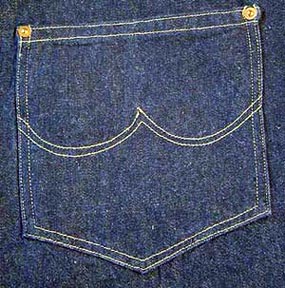New solar technology found in jeans
 A compound found in the dyes that make your Levi’s blue could soon change the way that solar cells are constructed. Researchers at Cornell University recently found that phthalocyanines, a class of organic compound commonly found in blue-jean dyes, could be assembled into thin, flexible sheets that could easily be stacked upon one another to form a lattice perfect for conducting electrons, which is a prerequisite for constructing effective solar cells.
A compound found in the dyes that make your Levi’s blue could soon change the way that solar cells are constructed. Researchers at Cornell University recently found that phthalocyanines, a class of organic compound commonly found in blue-jean dyes, could be assembled into thin, flexible sheets that could easily be stacked upon one another to form a lattice perfect for conducting electrons, which is a prerequisite for constructing effective solar cells.
Currently, solar panels are constructed from silicon, and these panels work well, but they are expensive to manufacture, and are inflexible, limiting where they can be used. Organic compounds would be cheaper to produce and more versatile, which is why the Cornell researchers have been investigating this unusual potential solar-cell material.
The new structures, known as covalent organic frameworks, or COFs, utilize phthalocyanines along with an acid catalyst to form the basic sheets. While errors are sometimes made in the reaction, resulting in imperfect sheets, the reaction is reversible and self-correcting, meaning that given enough time, the reaction will run until all of the molecules are arranged in the most stable form of a sheet. Phthalocyanines are an ideal component in COFs because they are effective at absorbing all wavelengths of light emitted by the sun, making it a rarity among organic materials.
As of yet, these COFs are not operable solar cells, but researchers hope that the phthalocyanine-based lattices will change the way people think about solar cell creation.



